SEARCH

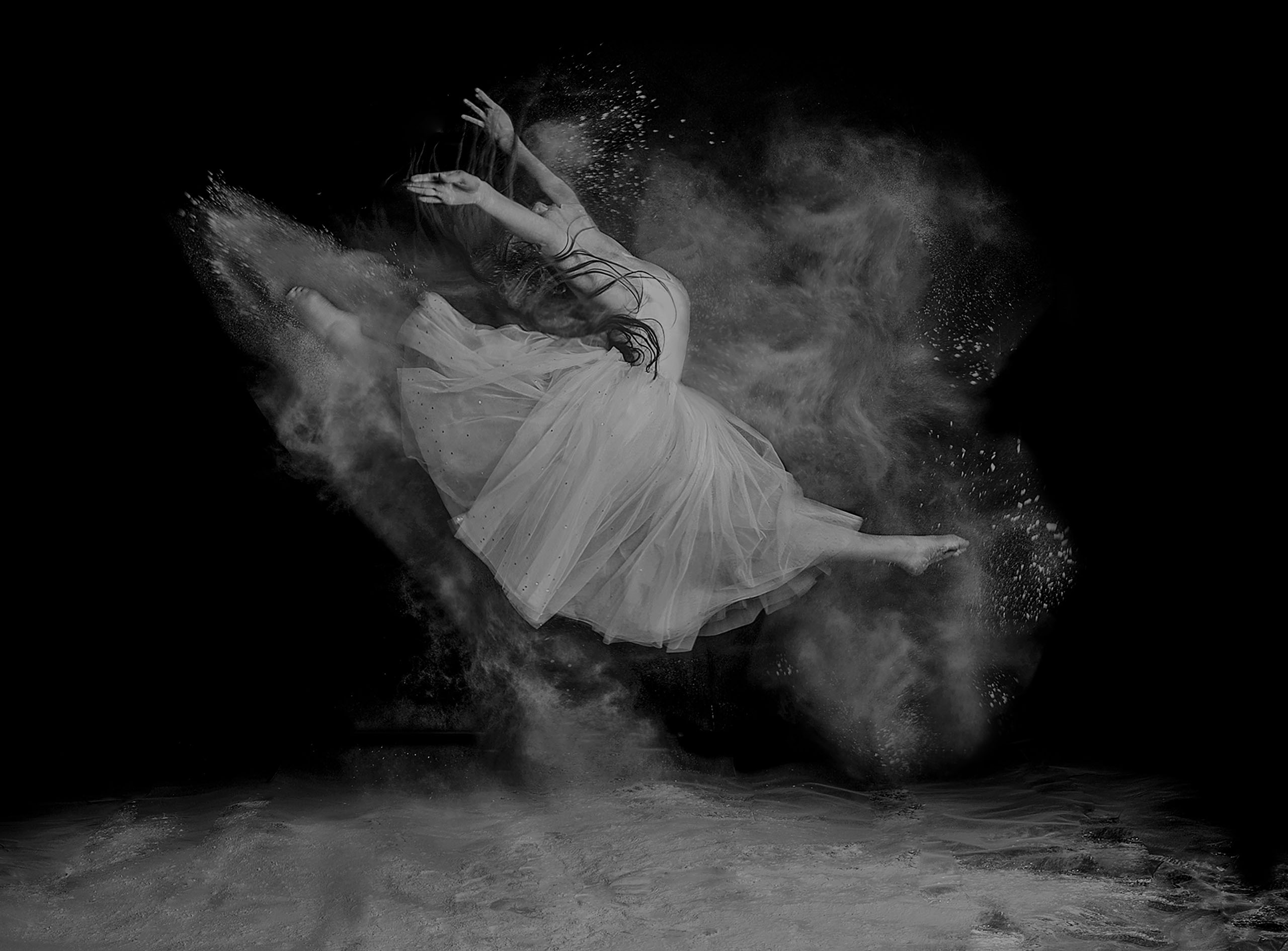
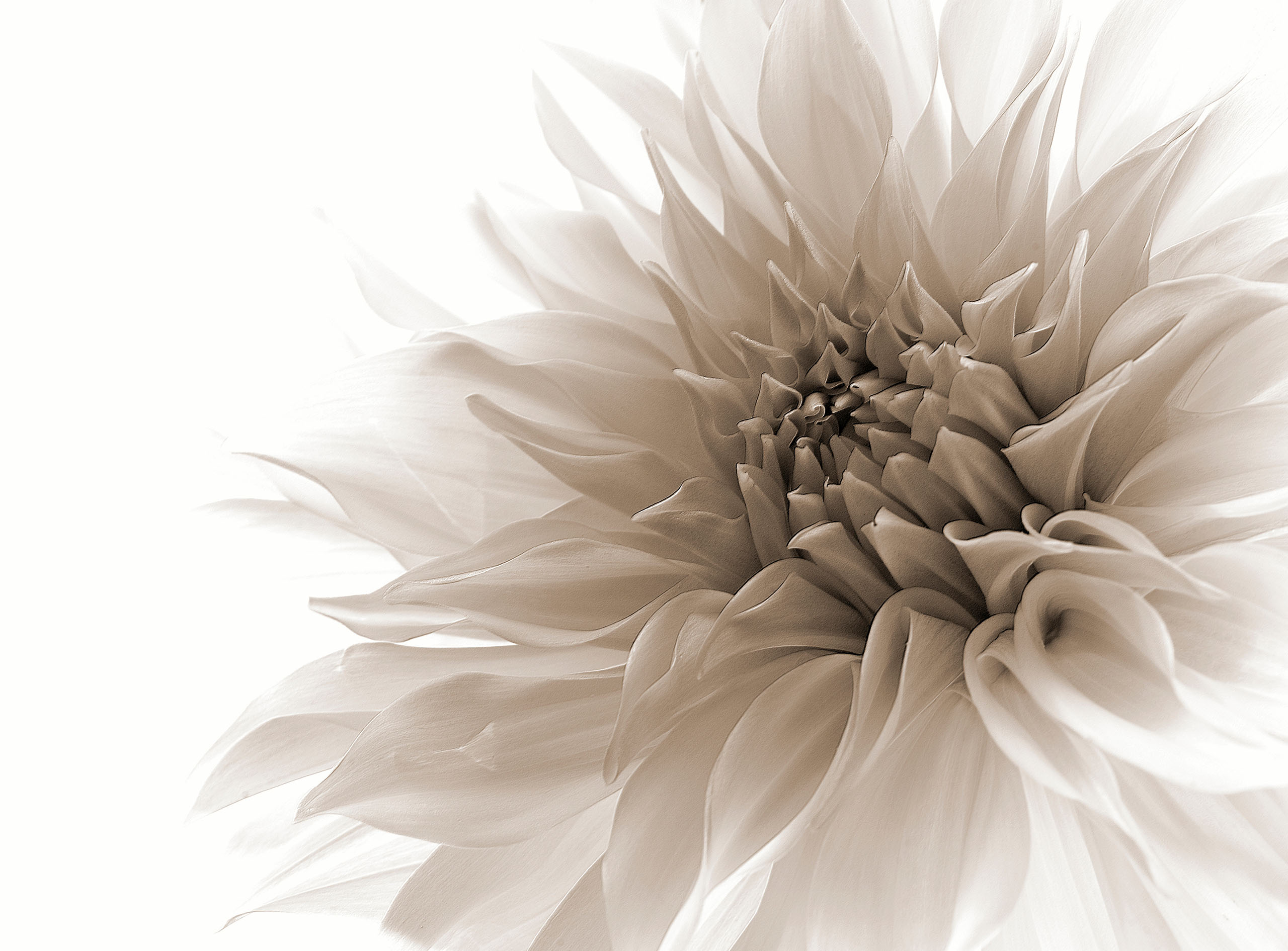
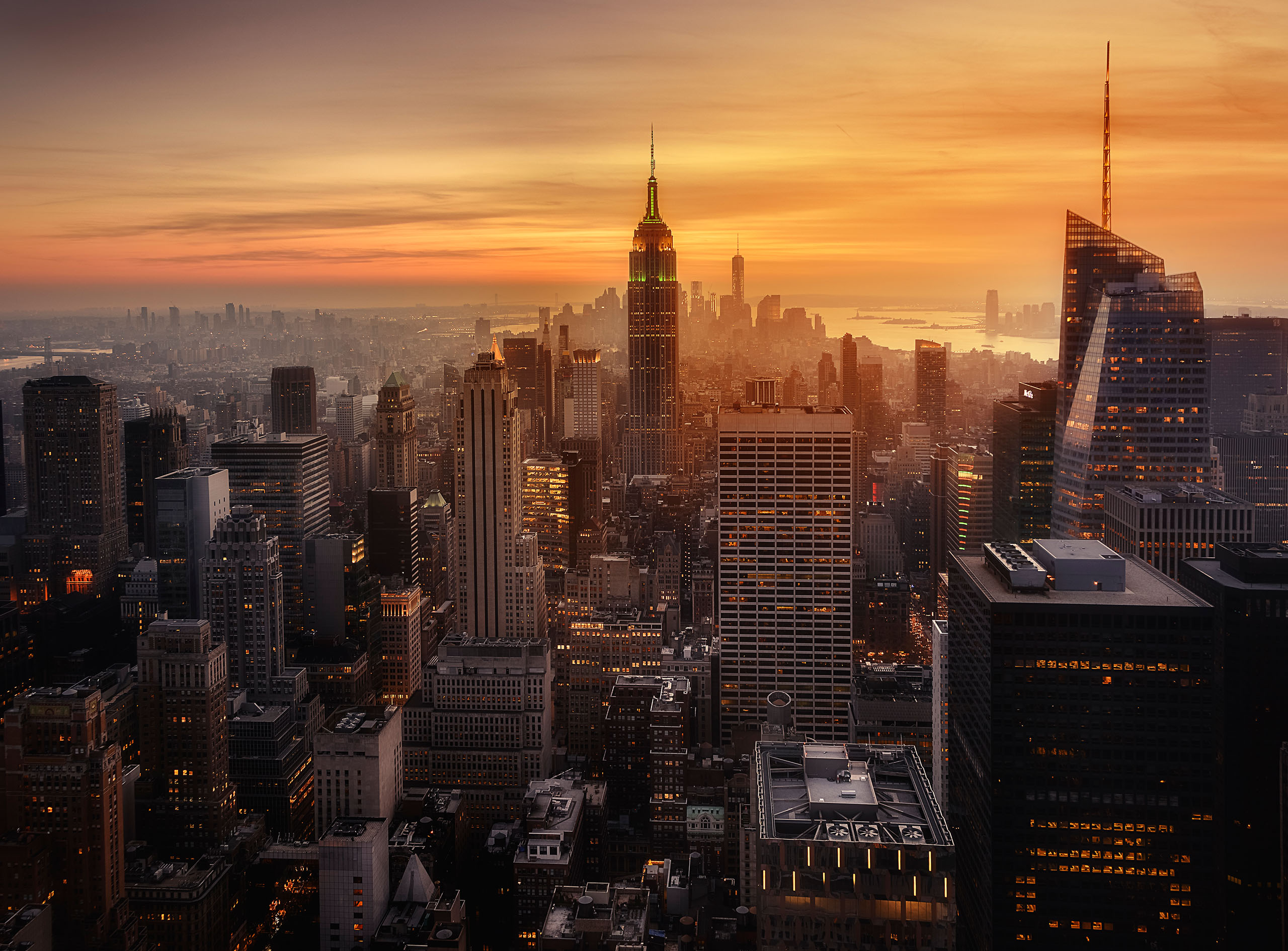
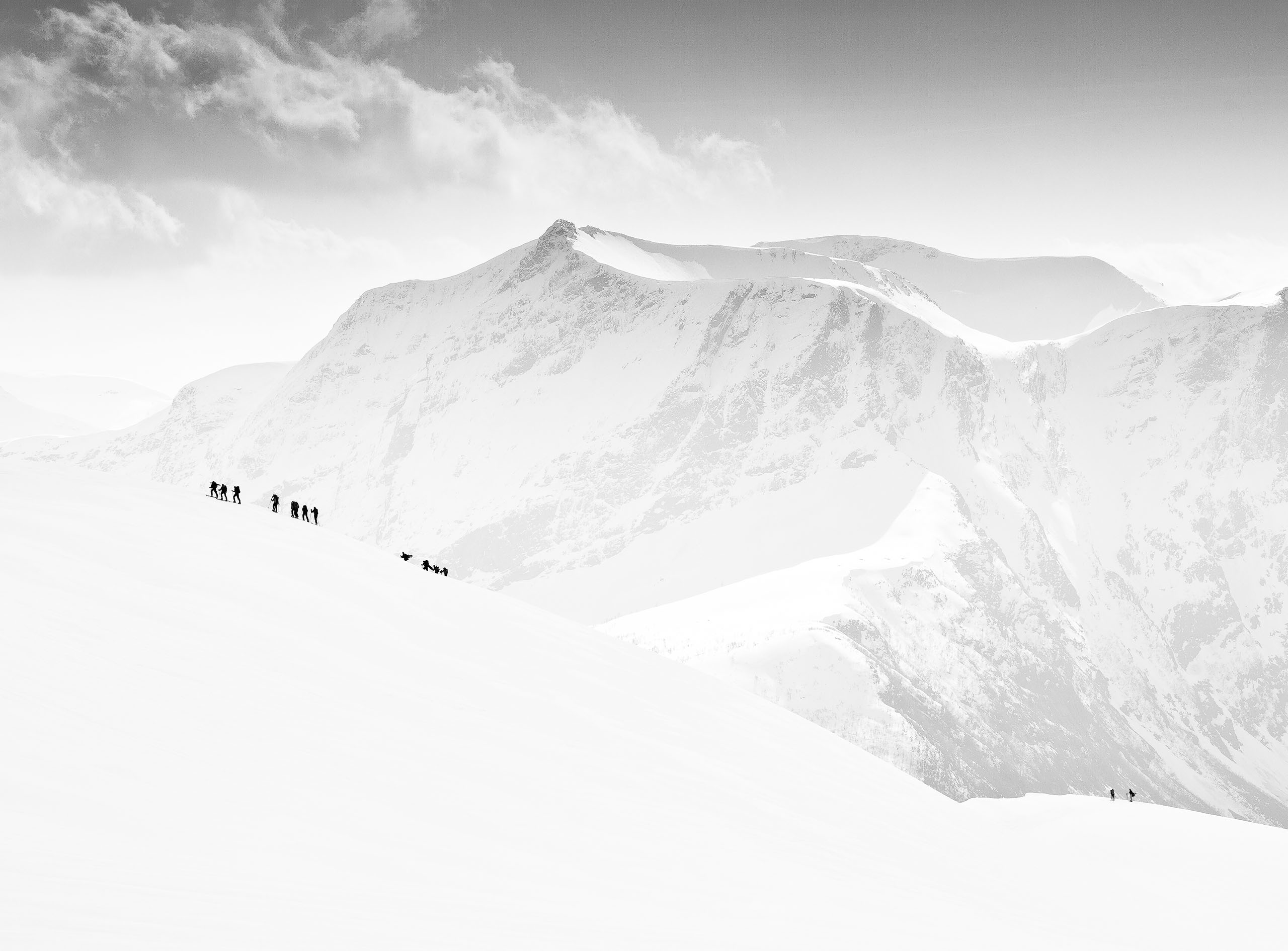
|
|
|
|


by Yvette Depaepe
published the 31st of December 2025
Wishes for 2026 from our founders, Ralf Stelander and Jacob Jovelou, and all crew members.
As the final pages of the calendar turn and a new year approaches, the art world stands once again at the edge of possibility. The transition into 2026 invites us to look forward—not with haste, but with curiosity, courage, and a renewed sense of purpose. At the 1x community, we see this moment as a fresh canvas: blank, open, and alive with potential.
The past year has been a testament to resilience and reinvention. Artists across the world have continued to explore, challenge, refine, and redefine their creative identities. They have found beauty in stillness, strength in vulnerability, and meaning in both the ordinary and the extraordinary.
Every new year brings a certain electricity, a spark that whispers:
What will you create?
What will you discover?
What will you dare to express?
In 2026, may that spark grow into a guiding flame.
Creativity is not a straight line—it is a river. And 2026 offers countless new tributaries waiting to be explored.
Art does not live in isolation. It grows richer when shared, discussed, admired, and even constructively challenged. Our community has always been one of dialogue and diversity, united by a shared passion for visual storytelling.
In the new year, we hope you will continue to :
Every image uploaded, every critique given, every encouraging word exchanged strengthens the creative ecosystem we collectively nurture. From the entire 1x Art Gallery team, thank you for being part of this extraordinary community. Your art enriches our platform, and your passion inspires everything we do.
Here’s to a luminous, adventurous, and creatively abundant 2026.
May your year be filled with fresh perspectives, meaningful work, and the courage to chase the images that live in your imagination.
Happy New Year—and may 2026 be your most inspired year yet.
 | Write |
 | Raffaele Corte PRO I completely agree with Hans-Wolfgang's doubts about the new path taken by 1x, but also with wishing you all the best for 2026! Thank you, dear Yvette! |
 | Roland Weber PRO Thank you very much for the wishes and the fabulous inspiration for the new year, Yvette.
A Happy New Year to you, to the 1x team and to all others around.
Happy New Year 2026! |
 | Montserrat Alviani PRO Thank you so much, Yvette and the 1x team. Happy New Year 2026! |
 | Yvette Depaepe CREW Thanks, dear friend! |
 | Gian Corrado DONATI PRO Thanks a lot Yvette ! Happy New Year to you and all of 1X members !!! |
 | Yvette Depaepe CREW Thank you, dear Gian ... Another creative year is waiting for us! |
 | Heike Willers PRO Happy New Year to all of you ! A wonderful and creative New Year 2026 to all of us! |
 | Elena Raceala CREW Wonderful selection, Yvette! Congratulations to all the editors, and a Happy New Year 2026 to all 1x members!! |
 | Yvette Depaepe CREW Thank you, Elena ... Let's go for a terrific photographic 2026 ;-) |
 | Karin Kilb PRO Thank you Yvette. Happy new year for you and all members. |
 | Yvette Depaepe CREW ♥♥♥ |
 | Caroline Bomers PRO Thank you for all beautiful wishes. A happy, wonderful and creative 2026 to all of you! |
 | Erik Engström PRO Happy New Year to all of you from all my heart |
 | Tom Pavlasek PRO Happy New Year 2026 to the entire 1x family! Thank you for the inspiration, creativity and passion shared here every day. Wishing everyone health, happiness and many unforgettable photographs in the coming year! |
 | Thierry Dufour PRO Happy New Year 2026 to all the 1X crew and members. Wonderful images to come during this new year on this splendid site !!! |
 | Elizabeth Allen CREW Thank you for all the wonderful wishes and Yvette for all her hard work. Wishing everyone good health, happiness, creativity and inspiration in 2026. |
 | Yvette Depaepe CREW Thanks dear Elizabeth. I wish you and your family all the best in 2026 and lots of photographic pleasure ;-) |
 | Hemanta Swain PRO May your shutter release with purpose, your focus stay true, and your light paint every moment in brilliance. As the new year unfolds, may you capture its every possibility, framing a journey of timeless memories. Happy New Year to those who see the world through the lens of wonder. |
 | Kathryn King PRO All beautiful and amazing photographs! Thanks for a wonderful magazine and best wishes to 1x team. |
 | Miro Susta CREW Very well composed message. Dear Yvette many thanks for your very hard and excellent work for 1x in 2025. I wish you and entire 1x community creative, happy, prosperous and healthy 2026. |
 | Yvette Depaepe CREW Thank you so much, dear Miro! |
 | Frank Bruynseraede PRO The very best wishes to the 1x team and
all members. Together we click 📷 |
 | DonnaHom APA PRO Wow! What a nice collection! My best compliments. Congratulations to all selected image authors. Thank you for all editors. Wishing you the very happy 2026. |
 | Yvette Depaepe CREW May many of your wishes come true in 2026, dear Donna! |
 | Eiji Yamamoto PRO Happy New Year to all the 1X crew and members! May 2026 be a great year for everyone! Dear Yvette, thank you so much for this wonderful article! |
 | Yvette Depaepe CREW Thank you, dear Eiji ... I wish you and your family all the best in 2026 |
 | Yaping Zhang PRO 祝所有会员以及所有访问 1x.com 的人新年快乐。衷心感谢Yvette全年辛勤付出!为我们带来无限精彩纷呈的照片。也祝所有的管理老师领导们新年快乐。
|
 | Benny Pettersson PRO Happy New Year to all members and everyone else who visits 1x.com. Looking forward to all the fantastic pictures. |
 | Jacob (Jian) Xu CREW Happy new year everyone! Big thanks to Yvette! Because of your hard work and dedication, the magazine delivered such wonderful content for us! |
 | Yvette Depaepe CREW Thanks for such a great compliment, Jian! |
 | Molly Fu APA PRO Best wishes to the 1x.com best team, Happy New Year everyone! |
 | Rana Jabeen PRO Best wishes for a wonderful year ahead to the Team and the entire 1x family here who share their art and talent to keep us motivated . Thank you Yvette for the lovely collection of photos and the superb article |
 | Yvette Depaepe CREW Thanks, dear Rana ... |
 | Hans-Wolfgang Hawerkamp PRO Happy New Year to the complete Team of 1x.com and I wish that the founders reconsider whether the path they chose a few weeks ago is the right one. Many thanks to you dear Yvette for your continous support and work in 1x.com |
 | Yvette Depaepe CREW Thank you, Hans-Wolfgang ... ;-) |
 | Colin Dixon CREW Happy New year to everyone on 1X and huge thank you to Yvette for her hard work throughout the year giving us the Magazine and its content. |
 | Yvette Depaepe CREW Thank you, dear Colin ... And heartfelt wishes for you and your wife in beautiful Cotswolds that I hope to discover in 2026. ♥♥♥ |
by Yvette Depaepe
Published the 29th of December 2025
'Energy'
To represent energy in photographs, you can use techniques that create a sense of movement and dynamism, as well as emotional resonance. This can be achieved through various methods, such as motion blur, colour palettes and capturing candid moments that reveal a subject's internal state. The submissions were very diverse, including sports, dance, and storm photography, all of which showed lots of energy.
The winners with the most votes are:
1st place : Peter Ebel
2nd place: Antonyus Bunjamin (Abe)
3rd place : DDiArte
Congratulations to the winners and honourable mentions.
Thanks to all the participants in the contest 'Energy'
The currently running theme is 'Decay'
Decay may not be the first thing that comes to mind when you think about photography. It offers a unique and intriguing opportunity to explore the passage of time, transformation, and profound beauty in the most unlikely places. Abandoned buildings, rusted cars and so many more. Each offers its unique story and aesthetic.
This contest will end on Sunday the 11th of January 2026 at midnight.
The sooner you upload your submission the more chance you have to gather the most votes.
If you haven't uploaded your photo yet, click here.
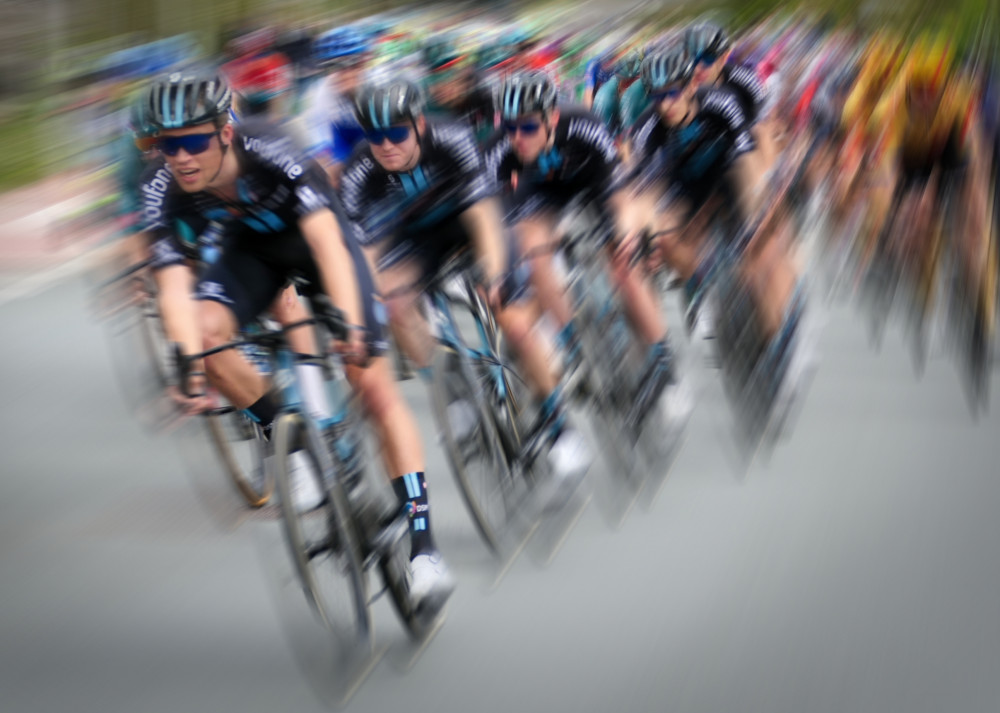 by Karin Kilb
by Karin Kilb |
 | Karin Kilb PRO Viele tolle Fotos wurden hier gezeigt.
Herzlichen Glückwunsch Peter zum ersten Platz.
Und danke an alle die mitgemacht und gewählt haben. |
 | superb series!...sublime! |
 | What a great series. Congratz to all ! And big thx to Yvette for everything she does on this amazing platform ! |
 | Miro Susta CREW Peter congratulations on 1 price award, and also my congratulations to all winners on excellent photo work, and also great thanks to our Yvette for her excellent work. |
 | Ruth Franke PRO Amazing images, thank you for showing, and thank you so much Yvette for your wonderful work throughout the year! |
 | Tomo PRO Amazing power and intensity. It's bursting with the force of life. |
 | DonnaHom APA PRO Congratulations to all winners. Thank you for organizers and judges. These are very well done images. |
 | Peter Ebel PRO Thanks to all participating and voting! I never expected this shot to be ranked as high as it did. It's a honor to the protagonist who is one of those with high engagement to make river surfing to happen in Hannover. |
 | Congratulations to all.
But nr 8 is AI generated. He did it again .... |
 | Peter Ebel PRO One can see this in the very first second, no lightning in nature behaves like this. |
by Yvette Depaepe
Published the 24th of December 2025
Heartfelt Christmas wishes from our founders, Ralf Stelander and Jacob Jovelou,
and all crew members.
'Merry Chrstimas’ by Magdalena Wasiczek
Christmas arrives each year not only as a celebration, but as a pause, a moment in time when light becomes more precious, silence more meaningful, and connection more deeply felt. Across cultures and centuries, this season has gathered layers of tradition, symbolism, and human longing, making it one of the most emotionally resonant moments of the year.
Christmas is seen by 1x as both a story and a feeling, one that has been shaped
by history, art, and shared human experience.
A Few Timeless Christmas Facts
Christmas, as we know it today, is a tapestry woven from many cultures:
These traditions remind us that Christmas has always been about more than celebration—it is about reassurance, continuity, and shared light.
Christmas Through the Eyes of Art
Artists have long been drawn to the atmosphere of Christmas: the soft contrast of light and shadow, the quiet of snow, the intimacy of interior scenes. Winter strips the world back to essentials, allowing emotion and form to speak more clearly.
Photographers, in particular, find poetry in this season—the glow of a single window at dusk, empty streets under falling snow, reflections that feel both fragile and eternal. Christmas invites us to see not just what is present, but what is felt.
Our heartfelt Christmas wishes for all of you
A Season That Connects Us All
Christmas reminds us that while the world may change, certain human needs remain constant: warmth, hope, belonging, and meaning. Across languages, borders, and beliefs, the season continues to unite us through shared symbols and simple truths.
We wish you a Christmas filled with peace, inspiration, and moments worth remembering—moments that, like great art, linger long after the season has passed.
Warmest Christmas wishes from the entire 1x family.
May your days be bright, your art be bold, and your heart be full.
by Anette Ohlendorf
by DDiArte
by Margareth Perfoncio
by DDiArte
by Hardibudi
by Hardibudi
by Takeborn Nikukyu
by Margareth Perfoncio
by Lukasz Pietrzak
by Rawisyah Aditya
 |
 | Byeonggoo Kim PRO 멋진 사진과 글 감사합니다 모두에게 행운이 함께 하길 기원합니다. |
 | DDiArte PRO thanks so much for this great article , and thanks so much to choose 2 of my xmas photos from this yeas. All the best to everyone |
 | Krone PRO Ralph, Jacob, everyone at 1x,
and Yvette, thank you so much for the wonderful article
and the wonderful photos! |
 | Excellent article and superb series ! Thank you so much, Yvette ! |
 | Thank you so much |
 | thanks a lot for this beautiful article. "Merry Christmas" to the complete 1x.com team |
 | Wanghan Li PRO Thanks a lot for the beautiful Christmas works which enhance the holiday mood! Love those wonderful photos! Merry Christmas to you all! |
 | Izabella Végh PRO Grazie mille questo bellissimo articolo. Buon natale e felice Anno Nuovo a tutti e tutte membri del nostro meraviglioso 1x. |
 | Susi PRO Thank you so much for this lovely article. Merry Christmas to the amazing team that makes 1x possible and to the entere community. |
 | joanaduenas PRO Wonderful presentation of the Christmas time, I wish all the 1x team a happy time these days and also a happies d@yes for all the colleagues of 1 x. |
 | Roland Weber PRO Thanks for nice story, Yvette
Merry Christmas to you and all around here. |
 | Miro Susta CREW Great thanks for beautiful Christmas 🎄 wishes Ralf, Jacob and Yvette, and I wish to entire 1x community Merry Christmas and all the best in 2026. |
 | X-FlyingKN PRO Many thanks to Ralf, Jacob, Yvette as well as the entire team for all the work you do in keeping 1x such a strong and inspiring place for photography.
Wishing 1x community all a Merry Christmas and a happy, creative New Year 2026 ! |
 | These images are absolutely magical — full of warmth, creativity, and the true spirit of the season. My heartfelt thanks to Yvette and the entire 1x team for continuously inspiring us with such beauty. Merry Christmas to all! 🎄✨ |
 | Conceição Lopes PRO Boas Festas! Merry Christmas! |
 | Thierry Dufour PRO Magnificent images. Merry Christmas to all. Thank so much Yvette for this article and Merry Christmas to you !!! |
 | Alfredo Bruzzone PRO Many thanks and a Great hollidays to everyone |
 | Simon H PRO Boldog Karácsonyt Kívánok Mindenkinek! 🙂 |
 | Gabriela Pantu PRO Thank you so much Ralf, Jacob, crew members and dear Yvette, wonderful article and superb pictures! Merry Christmas for the amazing 1x community, happy holidays!❤️🎄🌟 |
 | Eiji Yamamoto PRO Very beautiful article! Thank you so much, dear Yvette, dear Ralf, dear Jacob and all the crew members! Merry Christmas! |
 | Elizabeth Allen CREW Heartfelt thanks Ralf, Jacob and Yvette for these wonderful words and beautiful images. Merry Christmas to everyone at 1x and their loved ones. 🎄🌟❤️ |
 | YANGYING PRO Merry Christmas 🎄 |
 | Yvette Depaepe CREW May Christmas wrap you in quiet joy, gentle light, and moments that truly matter. From me to you all ... Yvette ♥♥♥ |
 | YANGYING PRO Merry Christmas 🎄
May warmth and good fortune find you right on time ✨ |
by Yvette Depaepe
Published the 22nd of December 2025
Hadi Malenjani is the person behind the professional name Hadi Malijani Photography. If this fine artist were to define his photographic vision, he would say that he doesn’t just see photography as a means of documenting reality. He sees it as a powerful tool for creating his own inner worlds. His approach is conceptual and surreal, expressing deep emotions, universal concerns, and stories that take shape in his mind.
Join me as I explore the images that make up his inner world, which he aims to transform into a 'completely different universe'.
‘Inner World’
Dear Hadi, could you briefly tell us about yourself, your hobbies, and any other jobs you have had?
I am an artist with 20 years' experience in the field of photography. I am passionate about connecting art, literature, technology and peace, and sharing this vision with future generations. I devote all my time to my art and artistic endeavors, seeking to promote and connect diverse cultures and peoples through the universal language of art. My artistic activities include graphic design, drawing, photography across diverse genres, installation art, ideation, directing and color theory, all of which I approach with passion. Each of my images reflects a mind that is always seeking to translate abstract concepts into tangible art.
In what ways have your life experiences and personal history influenced your photography?
I have always been deeply involved in the creative process. My long-standing presence in the artistic community and years of collaborating with artists from various disciplines have given me unique, cumulative experience. This constant engagement ensures that my artistic perspective is perpetually evolving, focusing on how art can be utilised in daily life and how this knowledge can be transmitted to the next generation of artists. My extensive studies have helped me to understand the complex spectrum of human emotions, as well as the intricate relationships between the individual, society and existence. This enables me to transform these insights into powerful visual subjects.
Which experiences have influenced your art the most?
The most significant experiences of my career have been collaborating with major artists from diverse cultures and countries. These experiences have greatly enhanced my understanding of art and its power as a universal language that connects people around the world. This realization reinforces my belief that, from childhood through to adulthood, humans require education, an openness to different perspectives and respect for all cultures.
Describe your overall photographic vision.
WHERE REALITY AND IMAGINATION MEET
If I were to define my photographic vision, I would say that I don't just see photography as a way of documenting reality. I see it as a powerful tool for creating my own inner worlds.
My approach is conceptual and surreal. It is a means of expressing deep emotions, universal concerns and the myriad stories that take shape in my mind. These images often reflect my inner world, which I aim to transform into a 'completely different universe'.
* Surreal Expression: My goal is to make the audience feel something beyond what they can simply see. My aim is to create dreamlike spaces, often inspired by the works of renowned poets from around the world, psychological concepts or philosophical ideas, in order to build a bridge between the visible and invisible worlds.
* Aspiration for Peace and Freedom: A constant yearning for a world full of love, peace and freedom underlies all my work. This aspiration informs the essence and atmosphere of my conceptual pieces.
METHOD OF CREATION
My work relies on creative yet precise editing. For me, the image creation process is akin to painting: I juxtapose different fragments of reality, meticulously constructing light, shadow, horizon and color. Rather than relying on pre-made presets, I prefer to build the colors by hand to accurately convey the exact mood I have in mind. This requires great patience and precision, but the result is the painterly depth and quality evident in my work, ensuring that every element is unique and original. Essentially, I take photographs to bring my mental worlds to life.
What is it about creatively edited photography and conceptual photography that draws you in?
My strong attraction to creative editing in photography is simple. The real world is insufficient for fully expressing my ideas.
For me, photography is not just about taking a picture; it's about creating a world. I harbor complex narratives, emotions and concepts, which are often rooted in philosophy, world literature or my personal concerns for peace and freedom. These concepts are abstract and surreal and cannot be fully depicted in a single unaltered shot.
FULL CONTROL OVER EXPRESSION
Creative editing grants me the power to:
* Transcend Reality: If my idea requires a particular sky, horizon or impossible element, editing is an essential tool for me. I meticulously build up the light and shadow, layer by layer, to bring my mental space to life.
* Achieve a Hand-Crafted Aesthetic: Editing enables me to create my own colors, rather than using generic filters. This gives the final image the depth and texture of a hand-crafted artwork. My goal is for the photograph to be 'presented', not just 'seen'.
* Amplify Emotions: In order to successfully convey a sense of melancholy or yearning for tranquility, absolute control over the light and mood of the image is essential. Precise editing can greatly enhance the emotional impact of a piece of work.
Put simply, I am drawn to creative editing because it is the only way I can bridge the gap between my inner world, which is impossible to capture, and the realm of the visually possible. Editing is the soul of my work, and indeed the completion of the raw photography.
Which is more important to you: the mood or story behind your images, or technical perfection?
In my photography, one element does not prevail over the other. In fact, a story and mood are incomplete without technical perfection, and technical perfection is soulless without a story. I view these two elements as the two fundamental pillars of my work.
Story and mood are at the heart of my work. They are the primary reason for creating the image, determining whether the photograph should be taken at all. If an image fails to convey a sense of melancholy or a philosophical concept, it is meaningless. Therefore, I first conceptualize my vision and then dedicate all my technical efforts to serving that core idea. However, a strong story alone is insufficient. Technical perfection is the body of the work.
In my photography, no single element prevails over the others. In fact, a story and mood are incomplete without technical perfection, and technical perfection lacks soul without a story. I view these two elements as the two fundamental pillars of my work.
Story and mood lie at the heart of my work. They determine whether a photograph should be taken at all and are the primary reason for creating the image. If an image fails to convey a sense of melancholy or a philosophical concept, it is meaningless.
Therefore, I first conceptualize my vision and then dedicate all my technical efforts to serving that core idea.
* Emotional Transfer is Disrupted: Technical flaws distract viewers, preventing them from fully immersing themselves in the surreal world depicted in the image.
* Plausibility is Lost: In order for a non-realistic (surreal) image to be powerful, it must appear believable. This is only achieved through the creative and meticulous editing of light, shadow and color, all of which demand technical excellence in post-processing.
I consider technical perfection to be the ladder that will take me to the pinnacle of storytelling. Without it, I cannot climb up. Therefore, both are vital to me. The story determines the destination, while the technique ensures that our journey there is of the highest quality.
What is your relationship with your subject matter beyond merely observing it?
Do you carefully prepare the locations where you intend to take photographs?
My relationship with the subject is not that of an observer, but of a creator and director. I am the creator and director of the mental universe in which the subject resides.
Whether human, object or manipulated natural element, my subjects are usually a symbol or physical embodiment of an idea, emotion or philosophical concept.
* When working with a human model, I request a specific pose and also ask them to internalize the emotional atmosphere, such as melancholy or peace, so that they can convey it authentically to the viewer.
* The main subject is often myself, although not necessarily in the form of a self-portrait. The subject is a reflection of my personal inner life and experiences.
For me, preparing locations is a complex and precise process, often involving a combination of fieldwork and digital construction.
* I searched for nature and urban environments for 'textures' and 'raw elements'. These elements form the physical basis of my work, such as a particular sky, a specific ground texture or an old wall.
* Ultimately, the places I photograph are often man-made, not just found.
Do you have any specific plans for your photography in the future, or any goals you wish to achieve?
In the future, I intend to explore broader, macro-level themes.
* Time and Identity: I create works that explore how time affects our perception of the self and of identity.
* Collective Unconscious: The exploration of symbols and archetypes that are shared across cultures, and their translation into surreal visual language. This process requires a deeper engagement with philosophy, psychoanalysis and semiotics.
* Creating New Light Textures: I am experimenting with light, textures and materials in my editing to create atmospheres that have never been seen in my work before.
On a global scale, my aim is to create more opportunities to promote art and its application in daily life, and to collaborate more extensively with artists from other disciplines, as well as with renowned global brands and galleries.
Is there anything else you wish to add and what do you think about 1X as a home base for your work?
What I always wish to emphasize is the power of imagination and dreams. I believe the human mind can create infinite worlds, and as an artist, it is my duty to encourage these imaginations and make them visible. Surreal photography is the bridge between fantasy and reality. For me, this work is not just an art form; it is also a way of inspiring others to explore their inner worlds.
1x.com is both an artistic home and a specialized university for me.
* High and Curated Standards: Thanks to its rigorous curatorial process, 1x is recognised as a top-tier online gallery. Having my work accepted by this platform's expert jurors serves as an endorsement of the technical standards and conceptual power of my pieces. This motivates me to consistently maintain the highest quality.
* International Artist Community: The platform brings together a global community of talented photographers, each with their own unique vision. Being part of this community provides valuable opportunities for exchange and exposure to different perspectives, which are essential for any artist.
* Launchpad for Globalization: My presence on 1x as an artist has exposed my work to audiences, collectors and art critics from around the world. This platform has played a key role in raising the international profile of my artistic voice.
In summary, 1x.com is an artistic home and a university where I can simultaneously exhibit my conceptual art to the highest standard and gain credibility.
‘Threshold’
‘The edge of existence’
‘Endless beginning’
‘Boundless’
‘City’
‘Alone on the line’
‘My Ocean’
‘line’
‘It is not too late IIII’
‘Touch’
‘You are not alone’
‘Anchor’
‘melancholy’
‘Dream vacation’
 |
 | Stunning creative work ! Congratulations ! |
 | Suzanne Bruinsma PRO Amazing work |
 | joanaduenas PRO Congrats for your creative and original work!!!! |
 | Bole Kuljic PRO Impressive and so original opus. Thank you for great story and masterful dialogue about this creative work. |
 | Thierry Dufour PRO Splendid work, impressive image, congrats Hadi and thank very much Yvette !!! |
 | Larry Deng APA PRO Very creative works. love it |
 | Ruiqing P. PRO Very impressive works that showed the power of imagination and dreams can be seen and shared in these ways. Inspiring! |
 | Yaping Zhang PRO 谢谢哈迪·马利贾尼大师分享赏心悦目的艺术创意杰出作品!令人赞叹不已!几何关系,色彩影调,立体空间透视,主题创意等在画面中表现的淋漓尽致,太牛了!欣赏学习了
|
 | Wonderful images and interview, thanks to Yvette and Hadi!! |
 | Lucie Gagnon CREW A fascinating interview of a brilliant mind. Thank you to you both, Hadi and Yvette. |
 | Hadi Malijani PRO Dear Lucie,
Thank you so much for your incredibly kind words. I’m thrilled that you found the interview fascinating. It was a pleasure sharing my thoughts with Yvette. Your support truly means a lot to me! |
 | Miro Susta CREW Dear Haji, since longer time I'm following your excellent photo work to which i wish to congratulate you. Now thanks this interview i know much more about you, thank you very much, and of course great thanks to our Yvette to organising it and bringing it to us. |
 | Miro Susta CREW Sorry for typing error Hadi. |
 | Hadi Malijani PRO Dear Miro,
Thank you so much for your kind words and for following my work over the years. It means a lot to me! I'm glad you enjoyed the interview, and I agree—Yvette did a fantastic job putting it all together. Also, no worries at all about the typo, I really appreciate the gesture!
Best regards, |
 | Ever since I discovered this author on 1x, his work has captivated me. I've loved learning more about him through the interview. Congratulations to the author on his work and to 1x for the opportunity to explore art in greater depth. |
 | Hadi Malijani PRO Dear Montserrat, thank you so much for your loyal support since the beginning on 1x. It’s truly rewarding to know that this interview helped you connect even more with my work. I’m grateful to 1x and Yvette for this space to share my vision. Your kind words mean a lot to me! |
 | Brilliant work and a brilliant mind. Congratulations on your achievements! |
 | Hadi Malijani PRO Dear Nichole, thank you so much for your incredibly kind words. To have my work and my perspective described this way by you is a true honor. I’m deeply grateful for your support! |
 | Helen Q Huang PRO Brilliant works! |
 | Hadi Malijani PRO That's very kind of you to say. I appreciate your feedback |
 | Dazhi Cen PRO Dreamy scenes. |
 | Hadi Malijani PRO thanks a lot for your much appreciated comment dear Friend |
 | Eiji Yamamoto PRO Dear Hadi, thank you so much for this wonderful interview with your creative and great works! Congratulations! Dear Yvette, thank you so much as always! It's very inspiring! |
 | Hadi Malijani PRO Dear Eiji, thank you so much for your kind words and congratulations! I’m truly glad you found the interview inspiring. It was a pleasure collaborating with Yvette on this, and I’m happy you appreciated our joint effort. Your support means a lot. |
 | Nazmul Bashar PRO Brilliant! |
 | Hadi Malijani PRO That's very kind of you to say. I appreciate your feedback |
 | Christian MARCEL PRO Thank you very much Hadi for this interview. I am and always will be an unconditional admirer of all your creations ! |
 | Hadi Malijani PRO I’m honored, Christian. Knowing that my creations resonate with you so deeply means a lot to me. Thank you for following my work and for your beautiful, encouraging words after this interview |
 | Gabriela Pantu PRO I am fascinated by your art, your vision, your deep understanding of human nature, dear Hadi.It is a delight to read the interview and to know more about you as an artist and as a human.Thank you for sharing your art and thank you Yvette for this wonderful interview.<3<3 |
 | Yvette Depaepe CREW My pleasure, Gabriela ;-) |
 | Hadi Malijani PRO Dear Gabriela, I am deeply moved by your words. Knowing that my vision and my exploration of human nature resonate with you means the world to me. It’s a joy to have such a thoughtful and perceptive audience. Thank you for your kindness and for being part of this journey. <3 |
 | Susi PRO Thanks you so much for sharing! Your work is incredible! I love it! |
 | Hadi Malijani PRO Thank you so much, Susi! Your energy and kind words really made my day. I’m so happy to know that you love my work. It means a lot to me!❤️ |
 | Erhard Batzdorf PRO Very appealing and excellent surreal works. Great! |
 | Hadi Malijani PRO Dear Erhard, thank you for your appreciation. Coming from you, it’s an honor to know that my surrealist vision resonates. I’m glad you found the works appealing. Best regards! |
 | Jane Lyons CREW Hadi, you are a constant source of inspiration! Thank you, |
 | Hadi Malijani PRO Dear Jane, thank you so much! Knowing that I can be a source of inspiration for you is what keeps me going. Your constant support means the world to me.🙏🙏 |
 | Annie Keizer PRO WOW...super👍👍 |
 | Hadi Malijani PRO I really appreciate your kind words |
 | Kevin Christonar PRO what a fantastic work. bravo 👏 |
 | Hadi Malijani PRO I really appreciate your kind words |
 | Love all your works, huge congratulations 👏👏👏 |
 | Hadi Malijani PRO That's very kind of you to say. I appreciate your feedback |
by Editor Lourens Durand
Edited and published by Yvette Depaepe, the 19th of December 2025
‘The color of my music’ by Lisdiyanto Suhardjo
One of the most challenging things to capture in a single image is energy. It involves using light, emotion, movement, dynamics, depth, colour and excitement in one space to create a powerful photograph.
Fortunately, there are many tricks we can use to help us achieve this goal.
Here are some of them:
MOVEMENT
In art, movement does not only refer to a moving subject, but also implies the movement of the viewer’s eyes when looking at the picture. The viewer's eyes move from the leading lines and converging lines to the shapes, balance, light and shade, before settling on the subject and wondering where it is moving to, or if it is moving at all.
The actual movement of a subject in a photograph can be implied by:
· Portraying athletes as they are about to pounce into action, showing their stances, as well as their hands, feet and arms.
· Panning with the subject to make it appear stationary against a blurred background.
· Not panning: creating a static foreground or background with a blurred, moving subject.
· Using a slow shutter speed to create a blurred effect.
· When photographing moving subjects, such as cars at a racetrack or animals in the wild, the background can often be distracting. In these cases, it may be helpful to select a suitable background and set up your camera here, focusing on a small area. Wait for the action to come into the frame before shooting.
DIAGONALS AND LEADING LINES
Diagonals can be used to capture drama. For example, in the well-known photograph of men raising the flagpole, the men and the flagpole are positioned diagonally to convey the drama of the occasion.
Converging diagonal lines, on the other hand, create a sense of depth.
Leading lines can also draw the viewer's attention towards an anticipated scene of action.
HORIZON LINES
While it is generally accepted that the horizon line should be straight and aligned with one of the thirds lines, placing it high or low can create a sense of drama.
NEGATIVE SPACE
In wildlife photography, for example, leaving space for the subject to move into can imply a sense of movement or space. Even in some portraits, if the subject appears to be looking at something outside the frame, leave some space for them to look through. In any case, never position a subject facing directly towards a border.
CREATING DEPTH
How can you create the illusion of depth in a photograph presented on a flat surface?
We have already explored some of the techniques, but let's review the tricks that can be employed.
· Use framing to create more than one plane.
· Remember that the space between objects (such as lamp poles or a row of trees) diminishes with distance, as does their size, so include these where you can.
· Converging lines, such as roads, railway tracks and staircases, are an effective way of creating a sense of depth and leading lines.
· Use colour perspective. It is a well-known phenomenon that warm colours (such as red) appear to come towards the viewer, while cooler colours (such as green and blue) appear to recede. For example, a red boat on a lake appears closer to the viewer than a blue boat.
· Of course, a shallow depth of field (bokeh) is also useful for creating depth.
CAPTURE THE MOMENT
Try capturing the moment immediately before an action, for example just before a discus leaves an athlete’s hand.
INDICATIONS OF ELECTRICITY
Other indicators can be used, such as haloes (which are made on purpose), pictures of electricity itself (e.g. generation, power stations and lightning) are all OK.
Although all of these tricks help to create impact, it is important to stress that they are only tools. It is up to the photographer to use them in unique ways and harness them to express the illusion of energy. Photographers need to see, feel and experience the force of energy while taking a photo, which will make viewers feel it too.
Please enjoy the selection of energetic photographs from 1X photographers.
‘Playing with splash’ by Angela Muliani Hartojo
‘Storm in San Francisco Bay' by Michael Delman
StormRoad’ by Marcel Egger
‘The garden hose’ by Stephanie Kleimann
'Break the waves’ by Jennifer Lu
‘The Ansai Waist Drum Dance’ by BJ Yang
‘Windmill de Adriaan’ by Larry Deng APA
“Pas de deux” by Frank Ma
‘Leaves’ by Vanya Baramova
‘Zinga & Sara’ by Claudio Piccoli
‘Freedom’ by Christophe Kiciak
‘Mystical Rail’ by Tristan Shu
‘Pure Grit’ by Irene Wu
‘Dynamic trotting race’ by Erhard Batzdorf
‘Nostalgia’ by Rana Jabeen
‘too late’ by Hilde Ghesquiere
‘Sequence of the gallop’ by Milan Malovrh
‘Flow of Dance’ by Rob Li
‘The performer’ by Marc Apers
‘Aura…’ by Katerina Lomonosov
‘black and white’ by Vedran Vidak
‘Breakthrough’ by James Cai
‘Eagle family’ by Tao Huang
 |
 | Impressive series, congratulations ! Thanks for this article ! |
 | Fantastic pictures and excellent article, congratulations! |
 | James Cai PRO Thanks, Lourens and Yvette ! |
 | Miro Susta CREW Wonderful photo collection |
 | David Manusevich PRO Very beautiful work |
 | Rana Jabeen PRO Excellent article on a very interesting topic.
Thank you Lourens and Yvette |
 | Jane Lyons CREW What a fabulous article and collection of photographs. Sublime! Thank you, Lourens |
 | Ria Groot Zevert PRO GEWELDIG! |
 | Wonderful collections and great works, Thanks to Lourens and Yvette ! |
 | Kathryn King PRO So many gorgeous photographs, I do love energy, wonderful topic and write up about it. |
 | Beautiful energy! Thanks a lot to Lourens and Yvette! |
 | Annie Keizer PRO SUPER👍👍 |
 | Dazhi Cen PRO Real energy!! |
 | Wanghan Li PRO Great! |
 | Vladimir Funtak PRO Quite a few upstanding works! |
 | Irene Wu PRO Really enjoyed this collection. Thanks to Lourens and Yvette! |
 | Larry Deng APA PRO Great collections and beautiful works. Thanks Lourens and Yvette for your hard work. +++ |
 | Great series ! |
 | Rob Li CREW Very creative collection and thoughts! Thank you! |
 | magnifiques !!!! |